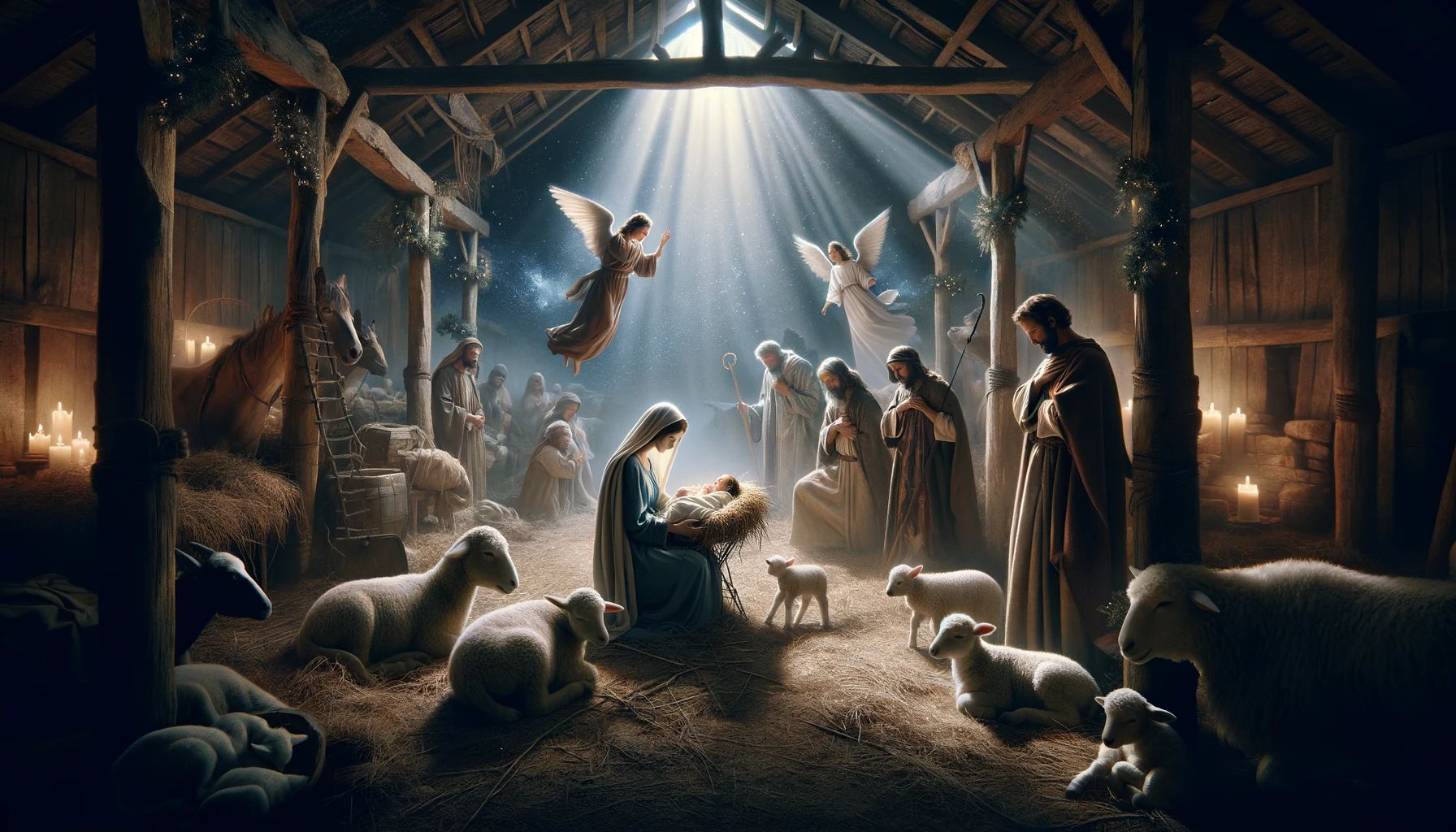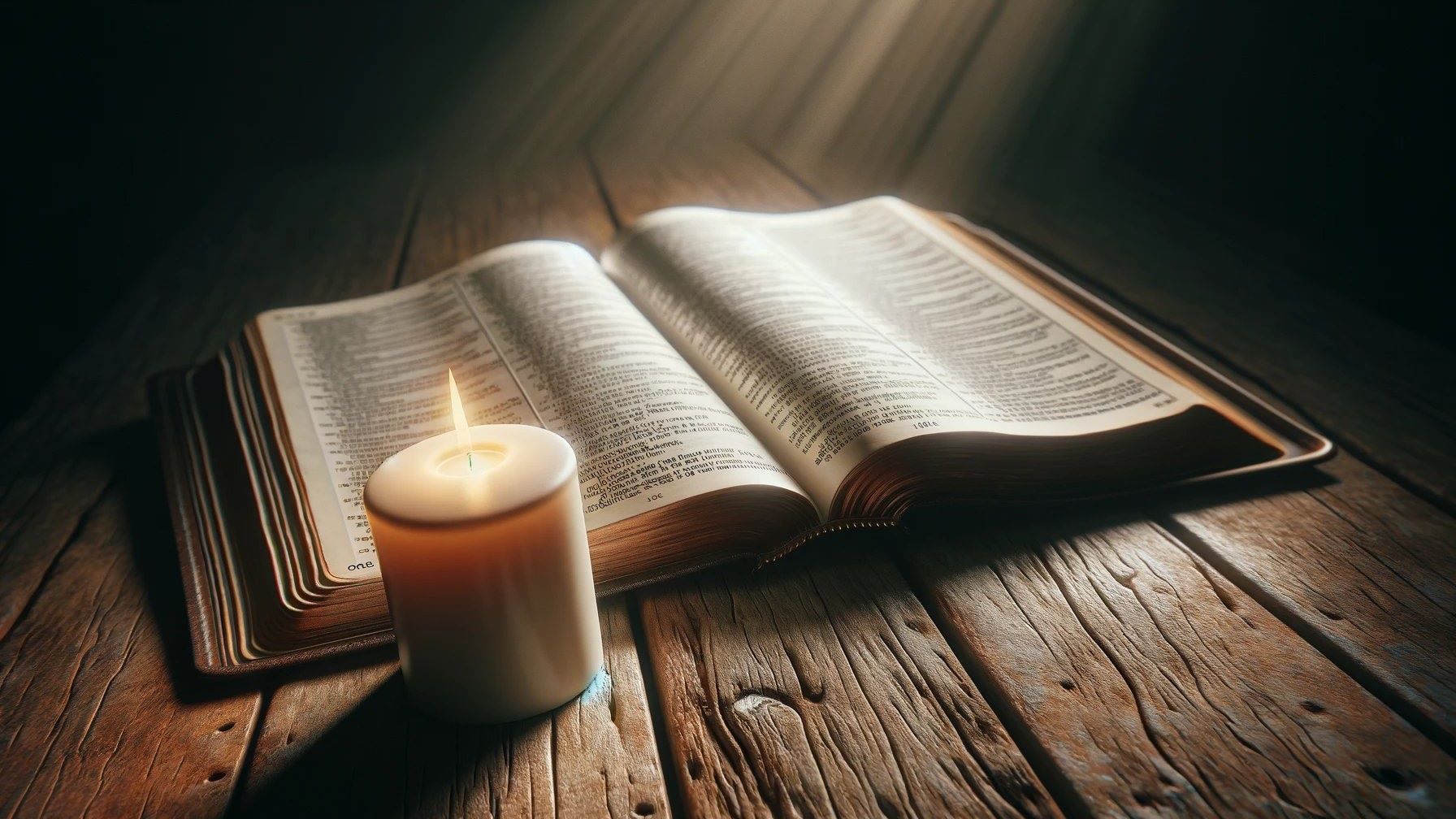Home>Special Themes>What Is First Advent


Special Themes
What Is First Advent
Published: February 13, 2024
Ericka Andersen, an editor at Christian.net, expertly merges digital strategy with content creation, focusing on faith and societal issues. Her communication skills enhance the platform's engaging narratives, fostering meaningful dialogue on belief's impact on society.
Discover the significance of the first advent and its special themes. Explore the history and traditions behind this important event.
(Many of the links in this article redirect to a specific reviewed product. Your purchase of these products through affiliate links helps to generate commission for Christian.net, at no extra cost. Learn more)
Table of Contents
Introduction
The First Advent is a significant event in the Christian calendar, marking the beginning of the liturgical year and the anticipation of the birth of Jesus Christ. This period, which encompasses the four Sundays leading up to Christmas, holds deep spiritual and cultural significance for millions of people around the world. It is a time of reflection, hope, and joyful anticipation as believers prepare their hearts to celebrate the birth of Jesus.
During the First Advent, the focus is on the themes of hope, peace, joy, and love, which are symbolized by the lighting of the Advent wreath candles. Each candle represents a different aspect of the spiritual journey towards the arrival of Christ. As the season unfolds, the lighting of these candles serves as a poignant reminder of the profound meaning behind this period of waiting and preparation.
The First Advent also serves as a time of spiritual renewal and reconnection with the core principles of the Christian faith. It encourages believers to embrace the virtues of patience, faith, and humility as they await the arrival of the Savior. This period offers an opportunity for individuals and communities to come together in prayer, reflection, and acts of kindness, fostering a sense of unity and shared purpose.
Furthermore, the First Advent sets the stage for the joyous celebration of Christmas, serving as a poignant reminder of the humble beginnings of Jesus and the profound impact of his life and teachings. It is a time to rekindle the sense of wonder and awe surrounding the miraculous birth of Christ, inspiring believers to approach the holiday season with a renewed sense of gratitude and reverence.
As we delve into the history, traditions, and significance of the First Advent, we will gain a deeper understanding of the profound spiritual journey that unfolds during this sacred time. It is a period that invites us to pause, reflect, and embrace the timeless message of hope and salvation heralded by the arrival of Jesus Christ.
Read more: What Is The First Advent Sunday
The History of Advent
The history of Advent can be traced back to the early centuries of Christianity, evolving over time to become a cherished tradition that holds deep spiritual significance for believers. The word "Advent" originates from the Latin word "adventus," meaning "coming" or "arrival," and it encompasses the period of expectant waiting and preparation for the celebration of the birth of Jesus Christ.
The origins of Advent can be linked to the practices of early Christians who sought to prepare for the annual commemoration of Christ's birth. While the specific customs and duration of Advent varied across different regions, the overarching purpose remained consistent: to engage in a period of spiritual reflection, repentance, and anticipation leading up to Christmas.
The formal establishment of Advent as a liturgical season can be attributed to the 6th-century practices of the Western Church. During this time, the observance of Advent began to take shape as a period of fasting and penitence, akin to the solemnity of Lent. The duration of Advent was initially set at six weeks, emphasizing the penitential nature of the season.
Over the centuries, the observance of Advent underwent several modifications, including the reduction of its duration to four weeks, aligning it with the current structure that begins on the Sunday closest to November 30th. This adjustment allowed for a more balanced and symbolic representation of the four centuries of waiting for the Messiah, as well as the four weeks representing the four major themes of hope, peace, joy, and love.
The symbolic elements associated with Advent, such as the Advent wreath and the lighting of candles, also emerged as integral components of the season's observance. The Advent wreath, with its evergreen foliage and four candles, serves as a visual representation of the spiritual journey towards the arrival of Christ, with each candle symbolizing a distinct theme.
As the centuries progressed, Advent evolved into a time of joyful expectation and spiritual preparation, emphasizing the dual nature of Christ's coming—both as a historical event and as a future promise. The rich historical tapestry of Advent reflects the enduring significance of this sacred season, serving as a poignant reminder of the timeless traditions and profound spiritual journey that continue to resonate with believers today.
The Meaning of the First Advent
The First Advent holds profound significance within the Christian faith, encapsulating the essence of anticipation, hope, and spiritual preparation as believers await the celebration of the birth of Jesus Christ. At its core, the First Advent symbolizes the arrival of the long-awaited Messiah, heralding a message of redemption, love, and divine grace.
This sacred period serves as a poignant reminder of the fulfillment of ancient prophecies and the promise of salvation, as foretold in the scriptures. It represents the dawning of a new era, marked by the arrival of Jesus as the embodiment of hope and the fulfillment of God's covenant with humanity. The First Advent encapsulates the profound truth that God's love and mercy are made manifest through the birth of Jesus, offering believers a renewed sense of purpose and spiritual awakening.
The First Advent also embodies the concept of Emmanuel, meaning "God with us," signifying the divine presence among humanity. It serves as a testament to the profound humility and compassion of Jesus, who chose to enter the world as a vulnerable infant, bridging the gap between the divine and the human experience. This act of incarnation represents the ultimate expression of God's love and solidarity with humanity, inviting believers to embrace the transformative power of Christ's presence in their lives.
Furthermore, the First Advent encapsulates the themes of anticipation and preparation, inviting believers to embark on a spiritual journey of introspection, repentance, and joyful expectation. It calls upon individuals to prepare their hearts and minds to receive the gift of Christ's love, fostering a sense of spiritual renewal and reawakening. The lighting of the Advent candles, each representing a distinct theme, serves as a visual and symbolic reminder of the profound significance of this period of waiting and preparation.
The First Advent also serves as a beacon of hope in the midst of darkness, illuminating the path towards a brighter future. It invites believers to reflect on the enduring message of peace, joy, and love that emanates from the birth of Jesus, inspiring them to embody these virtues in their daily lives. This period of anticipation and reflection fosters a sense of unity and shared purpose, as believers come together to celebrate the timeless message of hope and salvation heralded by the arrival of Jesus Christ.
In essence, the First Advent represents a sacred journey of faith, hope, and renewal, inviting believers to embrace the transformative power of Christ's arrival and the enduring promise of God's love. It serves as a timeless reminder of the profound significance of the birth of Jesus, inspiring believers to approach the holiday season with a renewed sense of gratitude, reverence, and spiritual awakening.
Traditions and Celebrations
The traditions and celebrations surrounding the First Advent are deeply rooted in rich symbolism, spiritual significance, and communal gatherings that foster a sense of unity and shared purpose among believers. These customs serve as poignant reminders of the profound spiritual journey that unfolds during this sacred time, offering a tapestry of traditions and celebrations that enrich the experience of anticipation and preparation for the birth of Jesus Christ.
One of the central traditions associated with the First Advent is the lighting of the Advent wreath. This symbolic ritual involves the progressive lighting of four candles, each representing a distinct theme: hope, peace, joy, and love. As each candle is lit on successive Sundays leading up to Christmas, it serves as a visual representation of the spiritual journey towards the arrival of Christ. The warm glow of the candles illuminates the path of anticipation and reflection, infusing homes and churches with a sense of tranquility and reverence.
Another cherished tradition is the Advent calendar, which provides a daily countdown to Christmas and offers a unique way to engage in daily reflections, scripture readings, and acts of kindness. Whether in the form of traditional paper calendars or modern digital versions, the Advent calendar serves as a tangible reminder of the passage of time and the joyful anticipation of Christ's birth. It encourages individuals and families to embrace the spirit of giving, gratitude, and spiritual contemplation as they mark each day leading up to the celebration of Christmas.
Community gatherings and Advent services also play a pivotal role in the traditions and celebrations of the First Advent. These gatherings provide opportunities for believers to come together in prayer, worship, and fellowship, fostering a sense of communal unity and shared devotion. From candlelight vigils to musical performances and special liturgical services, these communal celebrations create a sacred space for reflection, spiritual renewal, and the joyful anticipation of the birth of Jesus.
The tradition of the Nativity scene, or creche, holds a special place in the celebrations of the First Advent. Families and communities often display Nativity scenes depicting the birth of Jesus, accompanied by figures representing the shepherds, the Magi, and other characters from the biblical narrative. These displays serve as visual reminders of the humble origins of Christ's birth and the timeless message of hope and salvation that it embodies.
In essence, the traditions and celebrations of the First Advent weave a tapestry of spiritual significance, communal gatherings, and cherished customs that enrich the experience of anticipation and preparation for the birth of Jesus Christ. These traditions serve as poignant reminders of the enduring message of hope, peace, joy, and love that emanates from the arrival of Jesus, inspiring believers to embrace the transformative power of this sacred season.
The Importance of the First Advent
The First Advent holds profound importance within the Christian faith, serving as a cornerstone of spiritual reflection, anticipation, and renewal. This sacred period symbolizes the arrival of the long-awaited Messiah, Jesus Christ, and embodies the timeless message of hope, salvation, and divine grace. Its significance extends beyond historical commemoration, resonating deeply with believers and communities worldwide.
At its core, the First Advent encapsulates the essence of anticipation and preparation for the celebration of the birth of Jesus. It serves as a poignant reminder of the fulfillment of ancient prophecies and the promise of redemption, as foretold in the scriptures. This period of expectant waiting fosters a sense of spiritual awakening and reconnection with the foundational principles of the Christian faith, inviting believers to embark on a journey of introspection, repentance, and joyful expectation.
The First Advent also embodies the concept of Emmanuel, meaning "God with us," signifying the divine presence among humanity. It serves as a testament to the profound humility and compassion of Jesus, who chose to enter the world as a vulnerable infant, bridging the gap between the divine and the human experience. This act of incarnation represents the ultimate expression of God's love and solidarity with humanity, inviting believers to embrace the transformative power of Christ's presence in their lives.
Furthermore, the First Advent serves as a beacon of hope in the midst of darkness, illuminating the path towards a brighter future. It invites believers to reflect on the enduring message of peace, joy, and love that emanates from the birth of Jesus, inspiring them to embody these virtues in their daily lives. This period of anticipation and reflection fosters a sense of unity and shared purpose, as believers come together to celebrate the timeless message of hope and salvation heralded by the arrival of Jesus Christ.
The First Advent also holds profound relevance in fostering a sense of communal unity and shared devotion. It provides an opportunity for individuals and communities to come together in prayer, worship, and fellowship, creating a sacred space for spiritual renewal and reconnection. Through communal gatherings, Advent services, and cherished traditions, believers are able to strengthen their bonds with one another and reaffirm their shared commitment to the enduring message of Christ's birth.
In essence, the First Advent represents a sacred journey of faith, hope, and renewal, inviting believers to embrace the transformative power of Christ's arrival and the enduring promise of God's love. It serves as a timeless reminder of the profound significance of the birth of Jesus, inspiring believers to approach the holiday season with a renewed sense of gratitude, reverence, and spiritual awakening.
Read more: What Is The First Sunday Of Advent
Conclusion
The First Advent stands as a timeless testament to the enduring significance of the birth of Jesus Christ, encapsulating the essence of hope, anticipation, and spiritual renewal. As believers embark on this sacred journey, they are invited to embrace the transformative power of Christ's arrival and the enduring promise of God's love. The rich tapestry of traditions, celebrations, and spiritual significance woven into the fabric of the First Advent serves as a poignant reminder of the profound impact of Christ's birth on the human experience.
This period of expectant waiting fosters a sense of unity and shared purpose, as believers come together to celebrate the timeless message of hope and salvation heralded by the arrival of Jesus Christ. The lighting of the Advent candles, the cherished tradition of the Nativity scene, and the communal gatherings and Advent services create a sacred space for reflection, spiritual renewal, and the joyful anticipation of the birth of Jesus. These traditions serve as poignant reminders of the enduring message of hope, peace, joy, and love that emanates from the arrival of Jesus, inspiring believers to embody these virtues in their daily lives.
The First Advent also holds profound relevance in fostering a sense of communal unity and shared devotion. It provides an opportunity for individuals and communities to strengthen their bonds with one another and reaffirm their shared commitment to the enduring message of Christ's birth. This period of spiritual reflection and anticipation serves as a beacon of hope in the midst of darkness, illuminating the path towards a brighter future and inspiring believers to approach the holiday season with a renewed sense of gratitude, reverence, and spiritual awakening.
As we reflect on the history, traditions, and significance of the First Advent, we are reminded of the profound spiritual journey that unfolds during this sacred time. It is a period that invites us to pause, reflect, and embrace the timeless message of hope and salvation heralded by the arrival of Jesus Christ. The First Advent serves as a poignant reminder of the fulfillment of ancient prophecies and the promise of redemption, inviting believers to embark on a journey of introspection, repentance, and joyful expectation.
In essence, the First Advent represents a sacred journey of faith, hope, and renewal, inviting believers to embrace the transformative power of Christ's arrival and the enduring promise of God's love. It stands as a timeless reminder of the profound significance of the birth of Jesus, inspiring believers to approach the holiday season with a renewed sense of gratitude, reverence, and spiritual awakening.














